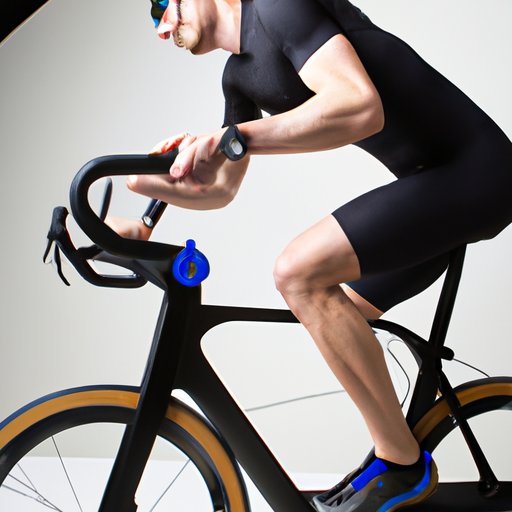Introduction
Cycling is a great way to get some exercise, build strength, and improve your overall health. Not only does it provide a low-impact cardiovascular workout, but it can also be used to target specific muscles and improve muscle development. In this article, we’ll explore which muscles are used in cycling and how to get the most out of your cycling workouts.
Comprehensive Guide to Understanding Which Muscles are Used in Cycling
The muscles used when cycling depend largely on the type of cycling you’re doing. Upright cycling, mountain biking, track cycling, and road racing all use different muscle groups. Here’s a look at which muscles are engaged during each type of cycling:
Upright Cycling
Upright cycling involves sitting upright on a bicycle and pedaling with your legs. This type of cycling works the quadriceps, hamstrings, calves, glutes, and core muscles. It also engages the arms and shoulders, as you need to maintain balance and control the handlebars.
Mountain Biking
Mountain biking is more strenuous than upright cycling, as you have to deal with steep inclines and rough terrain. This type of cycling works the same muscles as upright cycling, but it also engages the upper body more due to the need to control the bike while navigating difficult terrain. The arms, chest, and back muscles are also engaged.
Track Cycling
Track cycling is a fast-paced sport that takes place on a velodrome track. It requires explosive bursts of speed and power, so the muscles used are slightly different. The quads, hamstrings, and glutes are all engaged, as well as the core muscles. The arms and shoulders are also engaged as you hold onto the handlebars.
Road Racing
Road racing is similar to track cycling, but it takes place on open roads instead of a velodrome. It requires small bursts of power and speed, so the muscles used are the same as for track cycling. The core muscles, quads, hamstrings, glutes, arms, and shoulders are all engaged.
Overview of How to Target Specific Muscles When Cycling
If you want to target specific muscles when cycling, there are a few things you can do. First, focus on engaging your core muscles throughout the ride. This will help you maintain good form and prevent injuries. You can also try adding resistance to your ride by using a higher gear or increasing the incline. Finally, mix up your routine by incorporating sprints and intervals into your rides. These will help you engage different muscle groups and increase your power output.

The Importance of Strength Training for Cyclists
Strength training is important for cyclists, as it helps to build muscle and improve power output. There are a variety of exercises that you can do to target specific muscle groups. These include squats, lunges, and deadlifts for the lower body; push-ups, pull-ups, and rows for the upper body; and planks and crunches for the core. By focusing on these exercises, you can develop stronger muscles and become a better cyclist.
Anatomy of a Bicycle Ride: Which Muscles are Engaged?
When you take a bicycle ride, several muscle groups are engaged. The major muscles used are the quads, hamstrings, glutes, core muscles, and arms. The quads and hamstrings are responsible for pushing the pedals, while the glutes and core muscles help stabilize the lower body. The arms are used to maintain balance and control the handlebars.

Maximizing Your Power Output Through Muscular Endurance Training
Muscular endurance training is important for cyclists, as it helps to maximize power output. To improve muscular endurance, focus on exercises that involve sustained movements or multiple repetitions. Examples include squats, lunges, push-ups, and burpees. By doing these exercises regularly, you can increase your muscular endurance and become a faster cyclist.

Using Pilates to Enhance Core Strength and Improve Cycling Performance
Pilates is a great way to enhance core strength and improve cycling performance. Pilates exercises focus on strengthening the abdominal, back, and hip muscles, which are all key for cycling. Some of the best Pilates exercises for cyclists include the Hundred, Single Leg Stretch, and Double Leg Stretch. Doing these exercises regularly will help you build core strength and become a better cyclist.
Conclusion
Cycling is a great way to build muscle and improve your overall fitness. Different types of cycling use different muscle groups, so it’s important to understand which muscles are engaged during each type of cycling. Strength training and muscular endurance training can help you maximize your power output and become a better cyclist. Finally, incorporating Pilates into your routine can help you build core strength and improve your performance. By following these tips, you can get the most out of your cycling workouts and achieve your goals.


